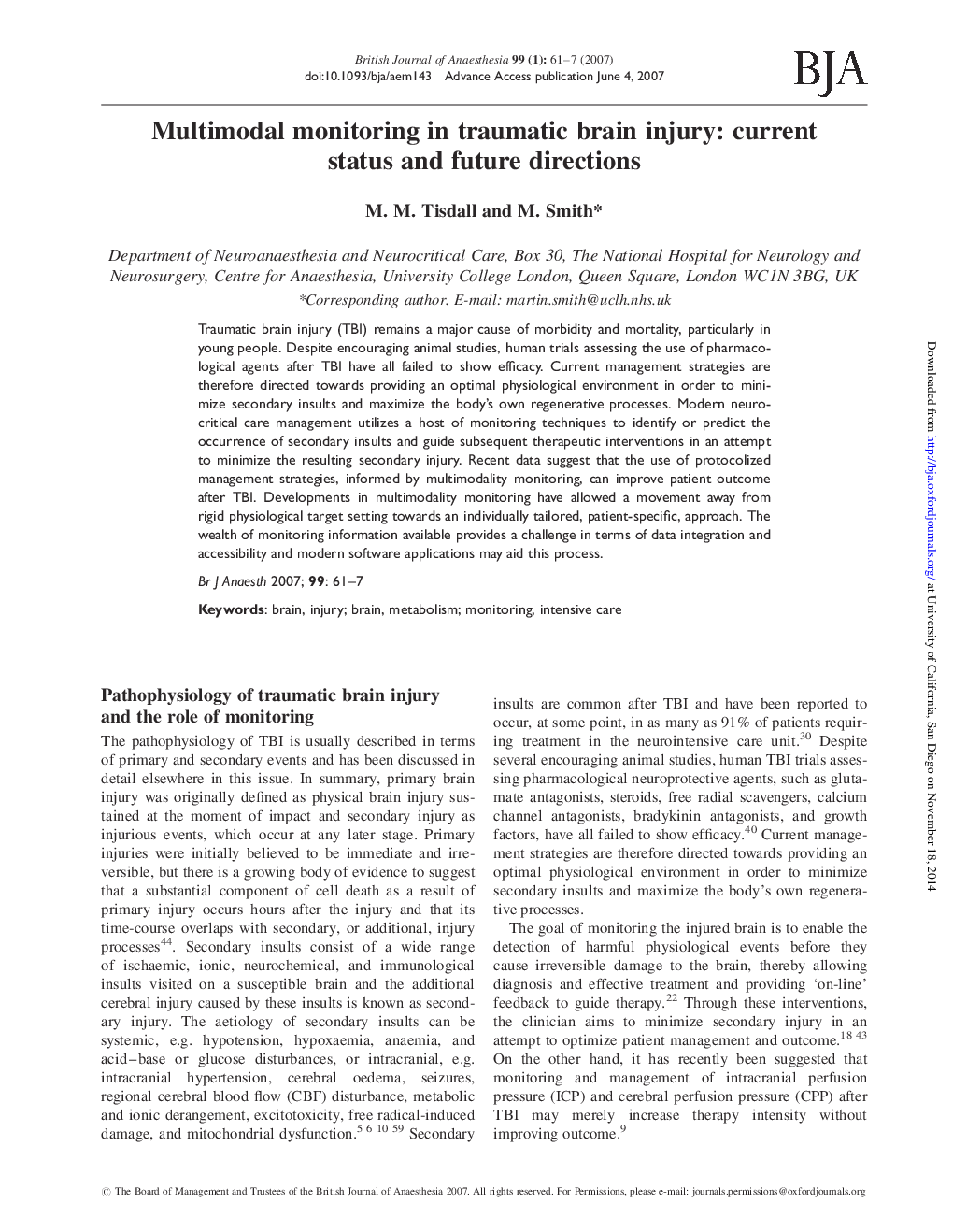| Article ID | Journal | Published Year | Pages | File Type |
|---|---|---|---|---|
| 8938823 | British Journal of Anaesthesia | 2007 | 7 Pages |
Abstract
Traumatic brain injury (TBI) remains a major cause of morbidity and mortality, particularly in young people. Despite encouraging animal studies, human trials assessing the use of pharmacological agents after TBI have all failed to show efficacy. Current management strategies are therefore directed towards providing an optimal physiological environment in order to minimize secondary insults and maximize the body's own regenerative processes. Modern neurocritical care management utilizes a host of monitoring techniques to identify or predict the occurrence of secondary insults and guide subsequent therapeutic interventions in an attempt to minimize the resulting secondary injury. Recent data suggest that the use of protocolized management strategies, informed by multimodality monitoring, can improve patient outcome after TBI. Developments in multimodality monitoring have allowed a movement away from rigid physiological target setting towards an individually tailored, patient-specific, approach. The wealth of monitoring information available provides a challenge in terms of data integration and accessibility and modern software applications may aid this process.
Related Topics
Health Sciences
Medicine and Dentistry
Anesthesiology and Pain Medicine
Authors
M.M. Tisdall, M. Smith,
